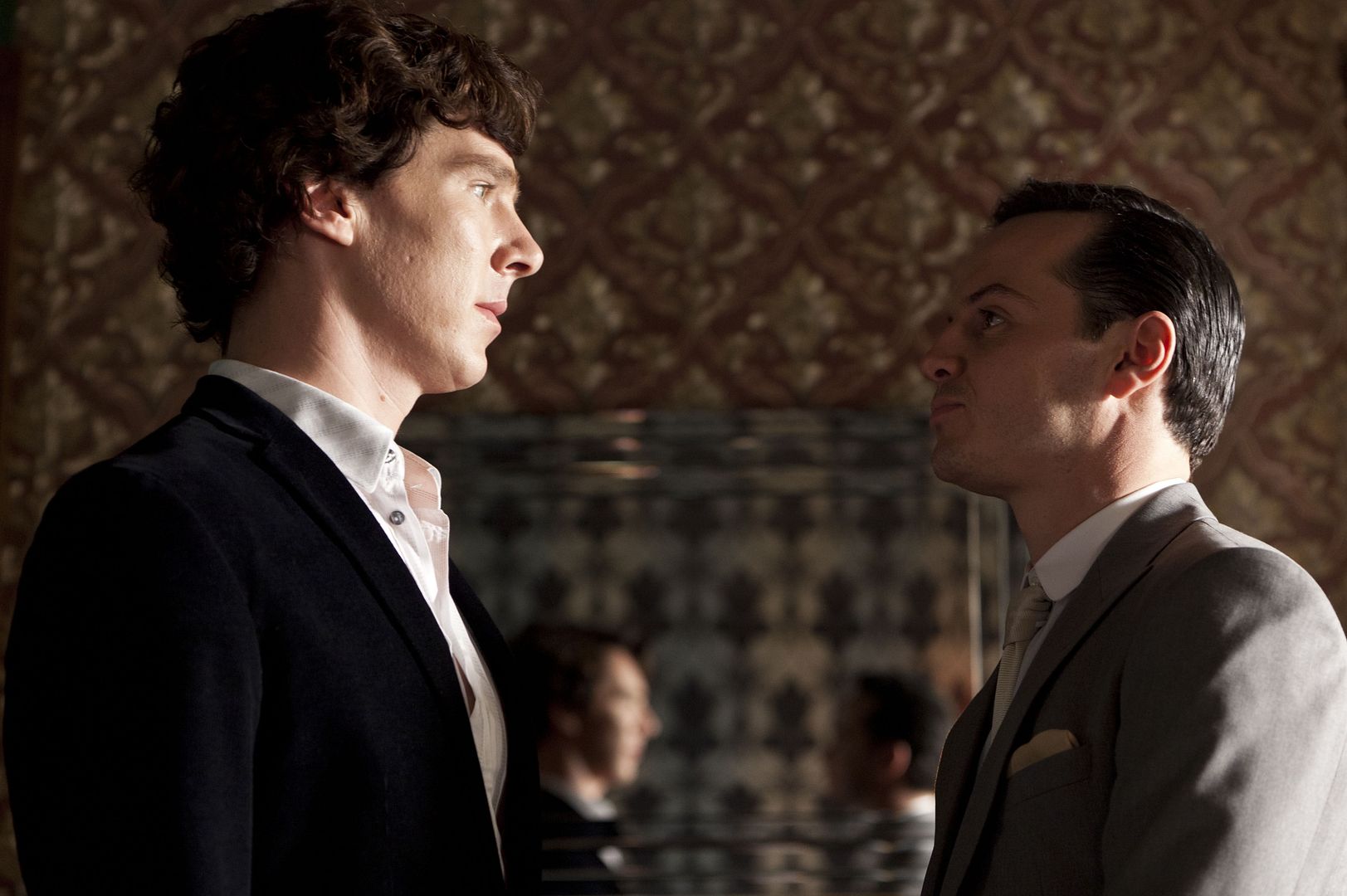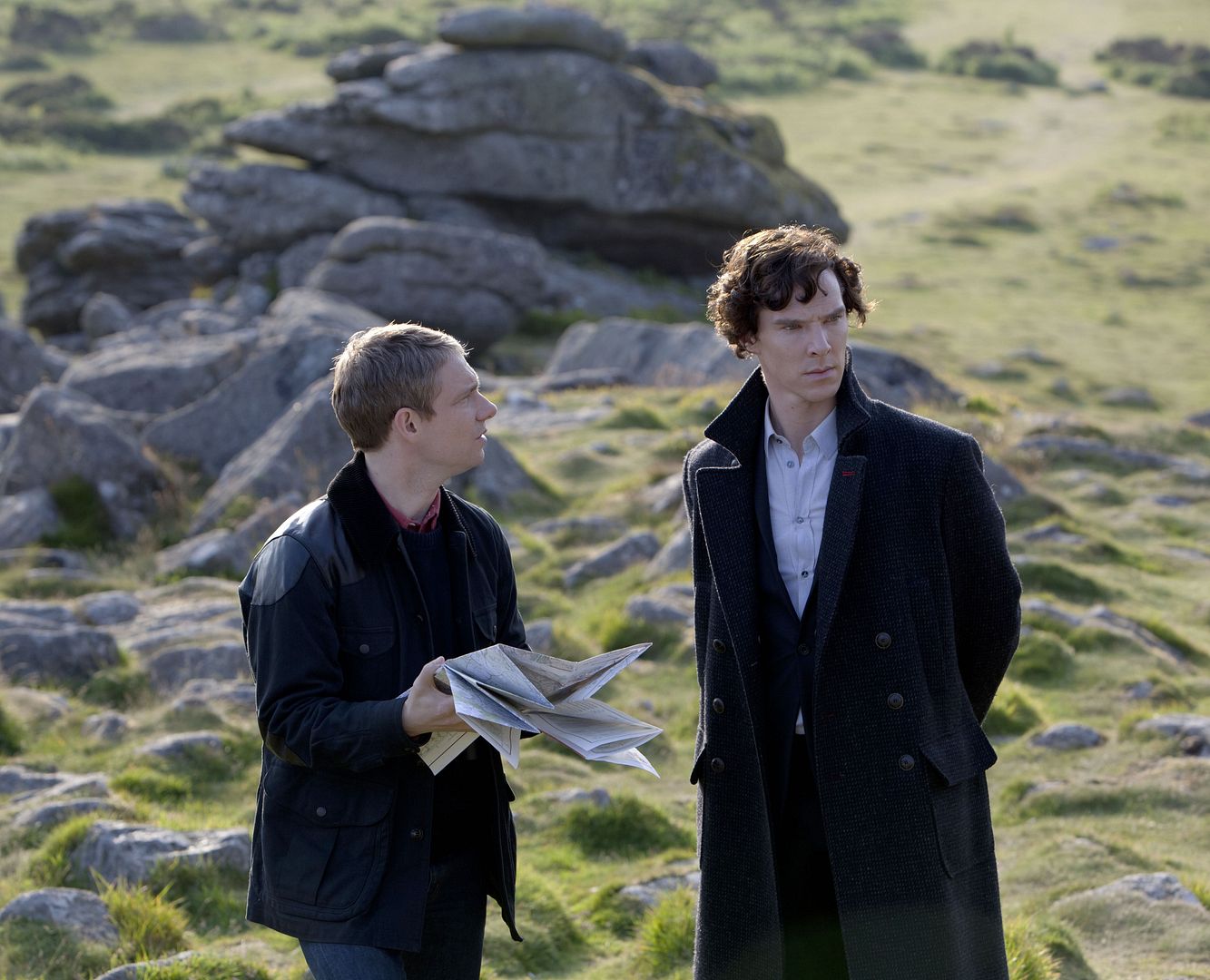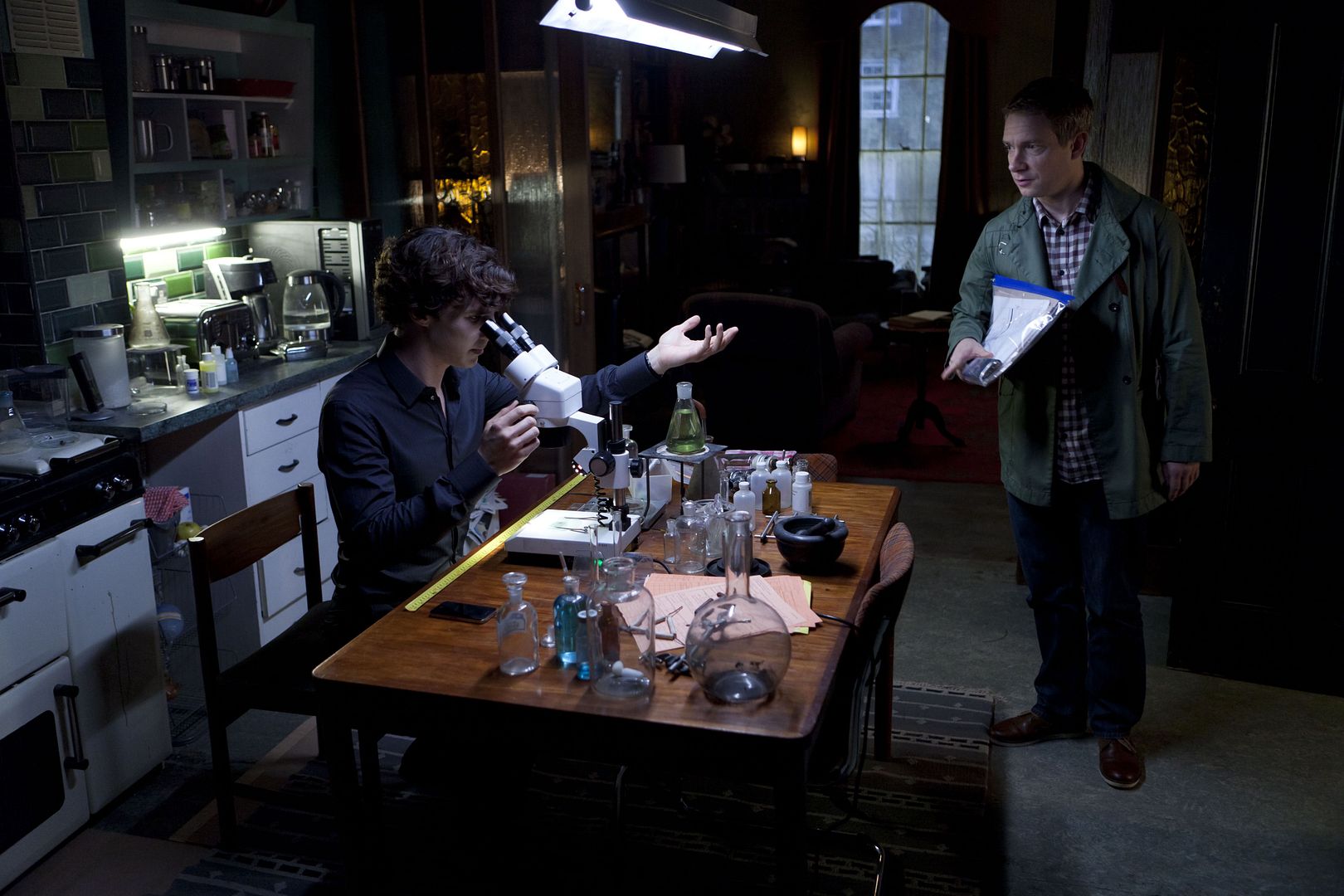We'll Take Manhattan
Thursday, 26 January 2012 - Reviewed by Matt Hills
 We'll Take Manhattan
We'll Take ManhattanWritten by John McKay
Directed by John McKay
Broadcast on BBC Four - 26 January 2012
There's some enjoyment to be had from this BBC Four writer-director project, but it's also frequently flawed. Both Karen Gillan and Aneurin Barnard give spirited performances as Jean Shrimpton and David Bailey respectively – and the camera clearly loves Gillan. Some of the most striking moments revolve around her simply smiling, conveying a sense of pure, spontaneous joy. Spontaneity isn't much in evidence otherwise, especially among the Vogue magazine villains of the piece. Featuring Frances Barber and Helen McCrory, this is something of a reunion for actors who've appeared together in Doctor Who, although as we move from 'Vampires of Venice' to modelling in Manhattan it's Helen McCrory who once again plays the arch baddie, this time one Lady Clare Rendlesham. Writing that sentence pretty much gives the game away: rather than a nuanced historical drama this is a black-and-white world of 'goodies' and 'baddies'. “Bailey”, as he likes to be known, is on the side of the angels, whereas Lady Clare stands for all the old, regimented ways of doing fashion.
There are occasional hints of a less programmatic approach – Bailey is so fixated on his mission to revolutionise the world of fashion photography, for example, that he fails to perceive how much poor Jean is suffering. The photographic image is more important than womanly reality. But such moments of complexity are relatively few, as John McKay's script focuses on a personality clash that's presented as a Key Turning Point In The History Of Popular Culture. Yes, everything feels capitalised and hammered home. Sadly, this is another way in which the drama goes awry: events have to be World-Shattering and History-Defining. So we get a dreadfully clunky caption telling us at the start that “In 1962... there was no such thing as youth culture” before Bailey's brave stand for unorthodox photography. Really? Not in any shape or form? Characters must be hallucinating Cliff Richard and skiffle when these are referred to later on, then.
The Beatles pipe up on the soundtrack near the end, Mary Quant gets a name-check, and we can all rest assured that the swinging sixties are about to seriously swing, thanks in large part to the conflict we've witnessed. I tried imagining this as an episode of Doctor Who where David Bailey takes the Time Lord's role and has to make sure that 1960s history runs on the right track. Oddly, it didn't take much of an imaginative leap, because that's basically the narrative pattern we're given. By trying to zap a zeitgeist down to one fashion shoot, and reducing cultural history to one Great Man – or at least one Great Photographer – We'll Take Manhattan teeters on the edge of self-parody. Youth culture is supposedly born in one fell swoop, and at the very same time fashion is magically democratised for the freedom of future generations. It's almost cultural history as a superhero movie. Only Pentax superpowers can save the world from a finely-stitched, upper class fate.
We'll Take Manhattan also displays some slightly self-defeating direction from John McKay. To give one example: Bailey refuses to take “bloody postcards” of New York, and yet we get a set of picture postcard images of NY – generic polished TV imagery – from McKay. Perhaps this directorial choice is meant to emphasize Bailey's rebelliousness, but such standardised direction instead makes it feel as if Bailey-the-character is trapped inside precisely the sort of thing he's seeking to overturn; pretty, standard-issue New York visuals. And looking at the actual photographs taken by the real David Bailey – many of which are approximated as we go along – it feels as if their TV reconstructions lack the mysterious, momentary play of light that happened at just that instant, at just that point in time. It's not that there's anything obviously wrong or anachronistic about the recons, just that their period drama simulacra bring home to the viewer how futile it is trying to recapture the texture and the presence of a unique moment. Rendered instead as a series of props – teddy; fence; shades – the ineffable is changed into something reproducible. It's another gesture that works firmly against the spirit of McKay's script: a series of images transforming Bailey's timing, flair and artistry into a template for studied emulation. We'll Take Manhattan wants us to fall in love with spontaneity and oppose the rigid repetition of sameness, but it rarely feels spontaneous – with the possible exception of Gillan's smile as it radiantly exceeds the clumsy narrative – and instead often feels just as staged as the Vogue fashion shoots it wants to decry.
Barnard and Gillan both undoubtedly shine here, even if Barnard is lumbered with some “mutton jeff” dialogue that's so bad it's more shockney than mockney. And Helen McCrory evidently relishes her latest turn as a baddie. There are also glimmers of economical, telling dialogue: Shrimpton counters Bailey's extravagant praises of her with an undercutting, insecure sentiment: "don't have any bosoms." And in three simple words ("and the children?") we know that Lady Clare is a wrong 'un. There's a beautiful script hidden under here somewhere, even if it hasn't quite found the right outfit. We'll Take Manhattan is just too lacking in subtlety, replaying rebelliousness as a generic set of ideas and reproducing startling photographic images all too slavishly. For a drama about iconoclasm – shattering those old Vogue icons – this wants to be Big And Important And Iconic a touch too much.
 Sherlock - The Reichenbach Fall
Sherlock - The Reichenbach Fall





